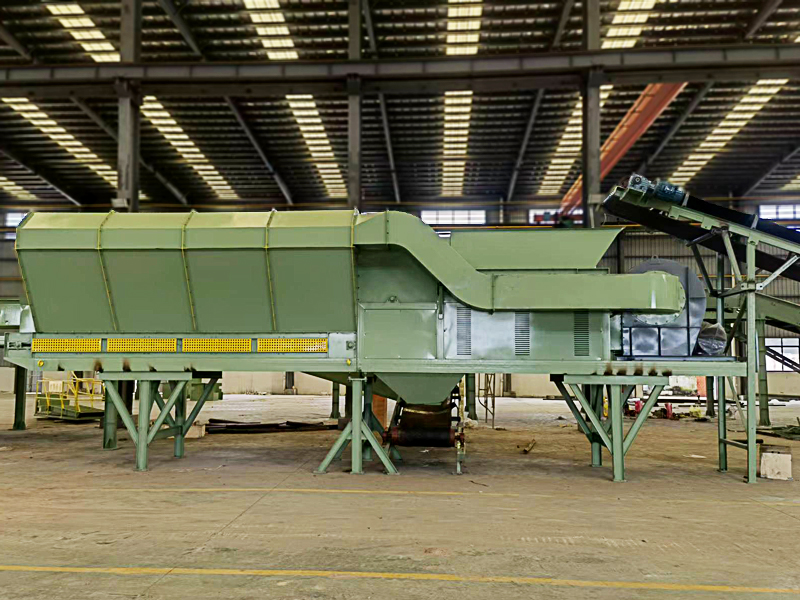Multifunctional sorting machine--windsifter
A windshifter is a device used to separate materials of different densities or shapes. It is often used in grain processing, seed processing, Chinese medicinal material screening, and some industrial production processes. Its working principle is based on the difference in the movement characteristics of materials in the airflow to achieve separation.
Below is an overview of the basic working principle of the windshifter:

1.Feeding:
The material first enters the windshifter through the feed port.
2.Airflow generation:
The wind separator is equipped with a fan or other type of aerodynamic device that can generate a directional airflow. The direction and speed of the airflow can be adjusted as needed.
3.Material suspension and separation:
When the material enters the airflow, lighter impurities (such as dust, light debris, etc.) will be carried away by the airflow, while heavier, qualified materials will fall or move forward a less distance due to gravity.
By adjusting the speed and direction of the airflow, materials of different densities or shapes can be effectively separated.
4.Collection and discharge:
The separated materials will be collected in different collectors respectively. Usually, lighter impurities are discharged into a dust bag or similar container, while qualified materials are collected in another container or directly transported to the next processing link.
5.Recycling:
In some designs, the air separator is also equipped with a circulation system, so that the airflow can be reused, thereby improving energy efficiency.
The application of air separators is very wide. In addition to the agricultural field, they are also used in industries such as plastic recycling and mineral processing. By precisely controlling the airflow parameters, the air separator can efficiently complete the task of screening and purifying materials.
-
 Trommel screenTrommel screen, also known as drum screens, are widely used in various industries for sorting and separating materials.Get Quote
Trommel screenTrommel screen, also known as drum screens, are widely used in various industries for sorting and separating materials.Get Quote -
 Crop straw double shaft shreddApplications:Biomass Energy Production: Shredded straw can be used as a feedstock for bioenergy plants to produce electricity or heat.Livestock Feed: Reduced-si...Get Quote
Crop straw double shaft shreddApplications:Biomass Energy Production: Shredded straw can be used as a feedstock for bioenergy plants to produce electricity or heat.Livestock Feed: Reduced-si...Get Quote -
 Zhongcheng Air Drum SeparatorAir drum separators effectively separate lightweight materials (e.g., plastics, paper) from heavier materials (e.g., metals, glass). This high efficiency is cru...Get Quote
Zhongcheng Air Drum SeparatorAir drum separators effectively separate lightweight materials (e.g., plastics, paper) from heavier materials (e.g., metals, glass). This high efficiency is cru...Get Quote
-
2024-06-06Drum Screen For Composting PlantDrum screen, also known as a rotary drum screen or trommel screen, is an essential piece of equipment used in composting plants for the separation of compost ma...
-
2024-06-05Can the Angle of the Ballistic Separator Be Adjusted?Ballistic separator is a type of mechanical sorting device used primarily in the recycling industry to separate materials based on their physical properties. It...
-
2024-04-13Wobbler FeederWobbler feeder is a type of feeding equipment that uses rotating elliptical bars, known as wobblers, to separate materials based on size and type before they re...
-
2024-06-05Waste Trommel And Copmost TrommelHowever, it's important to choose the right type of drum screen based on your specific needs. Today, Kevin from Zhongcheng Company will explain the differences...
-
2024-05-18Hydraulic Cone CrusherHydraulic Cone Crusher integrates machinery, hydraulic pressure, electrics, automation, and intelligent control, which can be used for medium crushing, fine cru...



